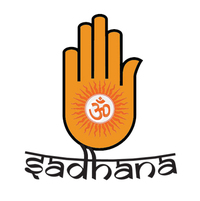I am a part of a progressive Hindu organization, Sadhana: Coalition of Progressive Hindus. In Hinduism, God is not above or external to us. In fact the same divine spirit is in every single one of us, regardless of race, religion, gender or caste.

I was born into a Brahmin family, but grew up largely outside India and away from the influence of caste identities and hierarchies. I understand the privilege that comes with being born a caste Hindu. It is painful to bear witness to the tortured history of Dalits (self-chosen political name for the groups formerly known as outcastes and untouchables), and the fact that in modern India, there is caste-based violence every single day - murders, rapes, lynchings, denial of access to water. Violence can be acute when young people fall in love across caste lines. Higher caste Hindus will often not share meals with or marry lower caste Hindus or Dalits.
The Mahabharata is a Sanskrit epic of ancient India and one of the most important texts in Hinduism. One of its stories, the story of Ekalavya, was recently presented to me by a Dalit activist as an illustration of how Hinduism is irrevocably entrenched in casteism. The story, in synopsis, is as follows:
Dronacharya was a Brahmin archery tutor, and Arjuna was his favorite pupil. Ekalavya, a boy from the tribal community called Nishadas, wanted to study under Dronacharya. Dronacharya refused, citing Ekalavya's caste. Ekalavya made a clay image of Dronacharya and studied intensively before the statue. He became a highly skilled archer. When Dronacharya learned that Ekalavya had studied before a statue of himself, he asked Ekalavya for his gurudakshina (the gift that a guru receives from his pupil). Ekalavya was prepared to give anything, and Dronacharya asked for Ekalavya's right thumb. Ekalavya, without any hesitation, chopped off his thumb for Drona. In spite of this, Ekalavya went on to become a great archer, and Dronacharya eventually repented his treatment of Ekalavya.
Given the abominable treatment of Dalits today and throughout history, it makes perfect sense that Dalits read the text in this way. The Dalit History Month website quotes Dalit writer Shashikant Hingonekar, "If you had kept your thumb, history would have happened somewhat differently. But you gave your thumb and history also became theirs. Ekalavya, since that day they have not even given you a glance. Forgive me, Ekalavya, I won't be fooled now by their sweet words. My thumb will never be broken."
While respecting Dalit readings of Hindu texts, and wholeheartedly supporting their struggle for justice, I wish to share my own progressive, non-casteist reading of the Ekalavya story:
Dronacharya said he rejected Ekalavya because of his lower caste, but a stronger motivation might have been Drona's fear that Ekalavya would become a better archer than his favorite student Arjuna.
The hierarchy of caste, or more accurately varna-jati, was a fact of life in ancient India, and it seems natural that the Mahabharata and other Hindu texts would reflect it. I contend that if the purpose of this story was to assert the superiority of Brahmins and Kshatriyas over lower castes, then Ekalavya would not have emerged as morally and physically superior in the story.
Ekalavya cuts off his thumb at Dronacharya's request because Dronacharya is the Guru that Ekalavya has accepted in his heart. It is an act of submission based not on the caste system but on the relationship between teacher and student (guru-shishya parampara), a supremely important tradition in Hinduism.
In that moment, Ekalavya shows such humility and integrity that he is elevated above Dronacharya. Even without a thumb, Ekalavya goes on to become a better archer than Arjuna. And the clincher is that Dronacharya repents. I would argue that Ekalavya's triumph and Dronacharya's repentance mean that if anything, caste discrimination is wrong.
There is one more observation to be made in this story. Ekalavya learns all the skills of archery before a statue he fashions of Drona. So technically, Dronacharya hasn't taught Ekalavya anything -- the knowledge was revealed to him through his own devotion, his own sadhana (praxis or faith in action). This is perhaps the strongest statement against reading the story as solely about Dalit subjugation.
The Bhagavad Gita teaches that anyone, no matter caste or creed, if they have complete devotion, can attain true knowledge:
Whoever, with faith, has offered love
to whatever form that person wishes to worship--
Upon every such person,
I bestow this immovable faith. (Bhagavad Gita 7:21, Translation Graham Schweig)
The story of Ekalavya is a popular one among Hindus, and the take-away is rarely an affirmation of the caste system. Ekalavya is a far more celebrated character than Dronacharya, who is often criticized for his moral failures. When people read the story, they grapple with moral and ethical questions: Was Dronacharya right in asking for this extreme gurudakshina? Is Ekalavya's act of submission to be admired? By thinking through these questions for ourselves, we come to discover our own principles, and we learn how to live our lives based on our own convictions.
Hindu scriptures, like all religious texts, can be interpreted to support whatever worldview one chooses. The fact that they are constantly retold shows that Hindus have a time-honored tradition of scriptural debate and reinterpretation. All religions are constantly evolving, and it is up to us to reimagine texts and traditions so they are relevant to our time.
We in Sadhana search for interpretations of scriptures that uphold the highest expression of equality and justice for the universe and for all people. We reject any Hindu teachings which teach prejudice and the superiority of some over others, in favor of teachings which are based on love, oneness and justice.
Note:
This 2011 report by Hindu American Foundation (HAF) is an excellent resource for anyone wanting to work to end discrimination based on caste.
